
Program subject to change.
Updated 18 November 2020
Lake Nutrient Criteria: Informing Environmental Decision Making With Big Data
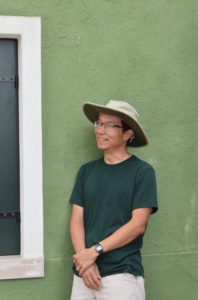 Lester L. Yuan, US Environmental Protection Agency, Washington, District of Columbia
Lester L. Yuan, US Environmental Protection Agency, Washington, District of Columbia
The potential for big data to address important questions in fields as diverse as political science, biology, and economics has been discussed increasingly in recent years. Ecologists have also recognized the potential of big data analysis, evidenced by the rapid increase in studies that incorporate analyses of large data sets. Use of big data has the potential for addressing ecological questions that occur at spatial and temporal scales much larger than those typically sampled in single studies. In some ways, water quality monitoring data collected by state and local agencies are ideally suited for big data analysis, as these data sets are voluminous and often consist of measurements of the same parameters. In this presentation, I provide an overview of recent work at the US Environmental Protection Agency to revise nationally recommended criteria for nitrogen and phosphorus in lakes and reservoirs. As part of this effort, case studies were conducted to develop techniques for deriving criteria based on combining existing state and local monitoring data with national data. Here, I review some of the lessons learned during these case studies and discuss a general framework for analysis of water quality data assembled from different sources.
Lester Yuan has worked at the US Environmental Protection Agency for 20 years and in the most recent 10 years has focused on nutrient issues in the Office of Water. He received a doctorate in mechanical engineering from Stanford University studying the physics of fluid flow.
Legacies of Struggle and Resistance in the Fight Against Environmental Racism in Canada
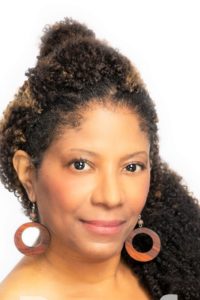 Ingrid Waldron, Dalhousie University, Halifax, Nova Scotia, Canada
Ingrid Waldron, Dalhousie University, Halifax, Nova Scotia, Canada
In this presentation, Dr. Ingrid Waldron will discuss the legacy of struggle and resistance in the fight against environmental racism in Indigenous and Black communities in Canada. She will highlight the specific ways in which Indigenous and Black peoples and women have been impacted by environmental racism, and share how they have been building grassroots environmental and social justice movements to challenge the legal, political, and corporate agendas that sanction and enable environmental racism and other forms of colonial gendered violence in their communities. She will conclude her presentation by providing an overview of how her Environmental Noxiousness, Racial Inequities & Community Health Project (The ENRICH Project) has been addressing environmental racism through a multi-method, interdisciplinary, multi-sectoral, and multi-media approach.
Dr. Ingrid Waldron was born in Montreal. She is an Associate Professor in the Faculty of Health at Dalhousie University, the Director of the Environmental Noxiousness, Racial Inequities & Community Health Project (The ENRICH Project) and the Flagship Co-Lead of the Improving the Health of People of African Descent.
Her research, teaching, and community leadership and advocacy work are examining and addressing the health and mental health impacts of structural inequalities within the environment, public infrastructure, health and mental health care, and child welfare in Black, Indigenous, immigrant, and refugee communities.
As the Director of the ENRICH Project over the last 8 years, Dr. Waldron has been investigating the socio-economic, political, and health effects of environmental racism in Mi’kmaq and African Nova Scotian communities. She has received numerous awards for the ENRICH Project, including the Dalhousie University President’s Research Excellence Award – Research Impact in 2018. The ENRICH Project formed the basis to Dr. Waldron’s first book There’s Something in the Water: Environmental Racism in Indigenous and Black Communities, which received the 2020 Society for Socialist Studies Errol Sharpe Book Prize and the 2019 Atlantic Book Award for Scholarly Writing.
The 2020 Netflix documentary There’s Something in the Water is based on Dr. Waldron’s book and was co-produced by Waldron, actress Ellen Page, Ian Daniel, and Julia Sanderson, and co-directed by Page and Daniel.
Her research also led to the creation of two private members bills for addressing environmental racism: the Nova Scotia bill An Act to Address Environmental Racism(Bill 111), which was introduced in the Nova Scotia Legislature in April 2015, and the federal bill A National Strategy to Redress Environmental Racism (Bill C-230), which was introduced in the House of Commons in February 2020.
Dr. Waldron is also conducting several studies on mental illness in Black, Indigenous and other racialized communities in Nova Scotia, focusing specifically on the mental health impacts of discrimination, stigma, and barriers to help-seeking. She is also collaborating with a team of researchers and community members to examine the impacts of the COVID-19 pandemic in the African Nova Scotian community in the Prestons.
Finally, Dr. Waldron is currently developing the first national anti-environmental racism coalition with partner Naolo Charles, which will bring together partners from multiple sectors to address and advocate around environmental racism, climate change, health inequities, and other social justice issues in Canada.
Collaboration Among Scientific Societies: APMS/NALMS/SWC
At the 2019 NALMS Annual Symposium in Burlington, Vermont, leaders from NALMS and Aquatic Plant Management Society gathered to reinvigorate previous discussions of collaboration between societies. This presentation will feature leaders from three aquatic resource management societies: Dr. Mark Heilman (Past-president of the Aquatic Plant Management Society), Lisa Borre (Incoming NALMS President) and Dr. Chi Ho Sham (the Source Water Collaborative). These respected leaders will discuss the advantages of scientific societies collaborating, sharing data and resources, and forging partnerships for the benefit of its members. Following opening remarks from each leader, we hope to engage with the panelists and attendees with thoughtful discussion on how our societies can foster partnerships in the future.
Session Moderators
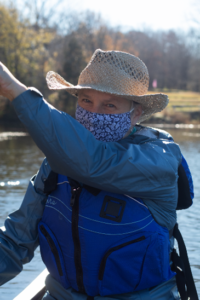 Perry Thomas, Ph.D., brings to her work a passion for connecting organizations with research findings and innovative tools to inform clean water actions. In addition to serving as a Basin Coordinator with the Kentucky Division of Water, she provides technical assistance to the Kentucky Volunteer Lakes Monitoring Program and supports communities in developing lake/reservoir watershed management plans. Before joining state government in 2015, she worked for 30 years in academia, with volunteer service focused on lake protection and restoration. Perry is the outgoing president of NALMS.
Perry Thomas, Ph.D., brings to her work a passion for connecting organizations with research findings and innovative tools to inform clean water actions. In addition to serving as a Basin Coordinator with the Kentucky Division of Water, she provides technical assistance to the Kentucky Volunteer Lakes Monitoring Program and supports communities in developing lake/reservoir watershed management plans. Before joining state government in 2015, she worked for 30 years in academia, with volunteer service focused on lake protection and restoration. Perry is the outgoing president of NALMS.
 Chris Doyle, CLM graduated from Rutgers University with a BS in Natural Resource Management. He has over 27 years of experience as an aquatic biologist including 16 years of experience as a lake manager. Recently, he left his position as the Director of Biology at SOLitude Lake Management, to pursue his dream of being a full-time writer and developer for a small publishing house. He remains active in the field of lake management as a private consultant. He became a Certified Lake Manager in 2008, and is the current Region 2 Director for NALMS. He is a Past President of the Northeast Aquatic Plant Management Society and currently is the Editor and Conference Program Chair for that society. In 2020, he served as the Program Chair for the NALMS Virtual Conference. He is a long-time resident of New Jersey, the Garden State.
Chris Doyle, CLM graduated from Rutgers University with a BS in Natural Resource Management. He has over 27 years of experience as an aquatic biologist including 16 years of experience as a lake manager. Recently, he left his position as the Director of Biology at SOLitude Lake Management, to pursue his dream of being a full-time writer and developer for a small publishing house. He remains active in the field of lake management as a private consultant. He became a Certified Lake Manager in 2008, and is the current Region 2 Director for NALMS. He is a Past President of the Northeast Aquatic Plant Management Society and currently is the Editor and Conference Program Chair for that society. In 2020, he served as the Program Chair for the NALMS Virtual Conference. He is a long-time resident of New Jersey, the Garden State.
Session Panelists
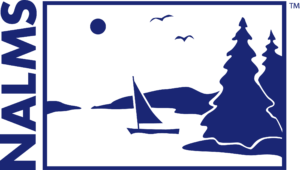 Forging Partnerships Through the North American Lake Management Society (NALMS)
Forging Partnerships Through the North American Lake Management Society (NALMS)
Partnerships and collaboration are central to the mission of the North American Lake Management Society (NALMS). The main mechanism for collaboration with other scientific societies is through the Consortium of Aquatic Science Societies (CASS), comprised of nine groups representing various interests within the aquatic science realm. Through CASS, NALMS works collaboratively to present the best available science surrounding aquatic resources and participate in science-based discussions on the public policy issues that affect these resources, including successful intervention to prevent rule changes to the definition of Waters of the United States (WOTUS) that would weaken water quality protections and recent adoption of an unprecedented statement sounding the alarm about the impacts of climate change to fish and aquatic ecosystems. CASS partners are actively planning the next Joint Aquatic Sciences Meeting (JASM) to be held in Grand Rapids, Michigan, May 16–20, 2022.
NALMS has also formed partnerships with other like-minded groups, including the Source Water Collaborative (SWC) and the Aquatic Plant Management Society (APMS). In collaboration with the SWC, NALMS adopted a position statement on Source Water Protection in 2017 along with an in-depth white paper by Hufhines et al. As a member of SWC, NALMS participated in promoting effective working relationships for the Farm Bill implementation and other source water initiatives. In 2019, NALMS leadership engaged in conversations with APMS leadership to renew collaborations regarding cyanobacteria-related initiatives, especially in the lead-up to the JASM 2022 meeting. In these discussions, NALMS reiterated its commitment to an integrated approach to lake management and promoting the best practices for in-lake and watershed-based solutions.
In response to the increasing problem of harmful cyanobacteria blooms in North America and around the world, NALMS established an Inland HABs Program in 2016. In 2019, under the leadership of Angela Shambaugh and Shane Bradt, NALMS announced new features on the NALMS Inland HABs Program Webpage, including an interactive Story Map featuring cyanobacteria resources. Shambaugh is also co-leader of a study focused on harmful cyanobacteria blooms by a national team sponsored by the Interstate Technology and Regulatory Council (ITRC) that works closely with EPA, NOAA, USACE and other federal partners. Shambaugh will be providing a more detailed update on the ITRC’s report that includes information on nutrient management, monitoring, in-lake management approaches, and communication strategies during the NALMS 2020 virtual meeting.
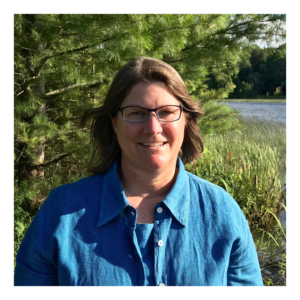 Lisa Borre has worked for 30+ years to conserve and manage lakes and wetlands around the world. From 1990 to 1997, she was the Lake Champlain Basin Program coordinator and executive director of the Vermont Citizens Advisory Committee on Lake Champlain’s Future at the Vermont Agency of Natural Resources where she learned the importance of stakeholder engagement and the watershed approach. She went on to co-found LakeNet, a world lakes network that was active for 10 years. Lisa is currently a Senior Research Specialist at the Cary Institute of Ecosystem Studies where she coordinates the Global Lake Ecological Observatory Network (GLEON).
Lisa Borre has worked for 30+ years to conserve and manage lakes and wetlands around the world. From 1990 to 1997, she was the Lake Champlain Basin Program coordinator and executive director of the Vermont Citizens Advisory Committee on Lake Champlain’s Future at the Vermont Agency of Natural Resources where she learned the importance of stakeholder engagement and the watershed approach. She went on to co-found LakeNet, a world lakes network that was active for 10 years. Lisa is currently a Senior Research Specialist at the Cary Institute of Ecosystem Studies where she coordinates the Global Lake Ecological Observatory Network (GLEON).
![]() Source Water Collaborative: United to Protect Our Drinking Water at the Source
Source Water Collaborative: United to Protect Our Drinking Water at the Source
In 2006, a group of national organizations came together and formed the Source Water Collaborative (SWC) to protect our drinking water at the source. SWC was originally formed with the goal to combine the strengths and tools of a diverse set of member organizations to act and protect drinking water sources for generations to come. Over time, the vision of the group has evolved, and it currently includes the following elements:
- Federal, State, and Local Actions Reflect the High Value of Safe Drinking Water
- Source Water Protection is Embedded into Our Processes
- All Stakeholders Work to Help Protect Drinking Water Sources
Currently, SWC is composed of 29 national organizations. Recognizing that resources are extremely limited, authorities are split and diffused, and protection practices are variable across geography, SWC members understand and appreciate the synergy of coordinated actions and the need for leveraging each other’s resources in order to increase the chances for success over each entity going it alone. This presentation will cover the history, action plan, and resources available from the SWC to interested parties on source water protection.
 Dr. Chi Ho Sham is a Vice President and the Chief Scientist of Eastern Research Group, Inc. (ERG), leading the drinking water and source water protection practice. He is an active member of the American Water Works Association (AWWA) and is currently its President-elect. He has conducted research and published on water quality and drinking water source protection issues over the past three decades. He received his B.A. from the University of Regina in Canada and his M.A. and Ph.D. from the University at Buffalo in New York. Currently, he is also an adjunct professor and a senior research fellow at Clark University in Worcester, Massachusetts.
Dr. Chi Ho Sham is a Vice President and the Chief Scientist of Eastern Research Group, Inc. (ERG), leading the drinking water and source water protection practice. He is an active member of the American Water Works Association (AWWA) and is currently its President-elect. He has conducted research and published on water quality and drinking water source protection issues over the past three decades. He received his B.A. from the University of Regina in Canada and his M.A. and Ph.D. from the University at Buffalo in New York. Currently, he is also an adjunct professor and a senior research fellow at Clark University in Worcester, Massachusetts.
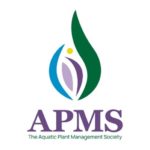 Eyes on the Horizon: Forging Science Society Partnerships to Improve Management of Aquatic Resources
Eyes on the Horizon: Forging Science Society Partnerships to Improve Management of Aquatic Resources
By definition, a society is ‘an organized group working together or periodically meeting because of common interests, beliefs, or profession.’ Science societies are formed to foster focused interaction on specific scientific efforts that ultimately improve our understanding and connectivity with a particular aspect of the world around us. Individual scientists study specific research questions within a broader subject area and report those results in presentations and publications to those versed in the field studying complementary but different questions. Scientific collaboration in this manner has many documented centuries of success in improving human knowledge. But there are challenges and traps in the specialized knowledge that scientists pursue. As we drill deeper into specialized subjects, there is risk that the knowledge isn’t translated and shared effectively to scientists in related fields to allow synthesis and determine context of how specialized findings fit into broader scientific understanding. To use the common adage, we ‘lose the forest through the trees’ or perhaps in aquatic or nautical terms, we ‘lose the horizon or our bearing amidst the waves.’ New technology has developed at such a rapid pace and as a result given us an ability to explore the world around us at an unparalleled speed. Internet-based communications that have developed over the last 30 years allow us to interact instantly with fellow scientists and non-scientists alike across the globe. These powerful tools allow science societies to improve knowledge rapidly in their disciplines…but also paradoxically create higher risk that we become too specialized and focused on common interests within our societies to the exclusion of critical synthesis and cross-disciplinary interaction necessary to understand how new science connects to broader understanding. This broader understanding relative to management of aquatic ecosystems and their uses—focus areas for NALMS, APMS, AWWA, and a limited number of other aquatic science societies—allows the development of intervention strategies that are comprehensive, efficient and adaptive amidst strong environmental pressures such as habitat alteration and climate change. Synthesis of science across disciplines and societies allows improved communication as well to the public and policy makers that permit sound, scientifically-driven management to be understood and resourced for the benefit of all. This presentation will further expound upon the importance of forging inter-society partnerships—particularly with society at large seemingly more fractured daily and encouraging less not more interaction with those ‘outside your group’. The presentation will discuss the specific example of harmful algal blooms (HAB) and how through strong partnership between different societies, aquatic science can be synthesized to propose and implement comprehensive HAB management with maximum benefit for aquatic ecosystems and their critical uses.
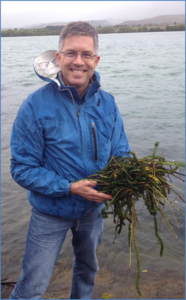 As Director of Aquatic Technology for SePRO (Carmel, Indiana USA), Dr. Mark Heilman leads the company’s development efforts to bring forward new technologies for managing water resources. He also directly assists many public and private natural resource managers in the US and internationally with challenging projects managing aquatic invasive species with an emphasis on aquatic plants. Dr. Heilman received his B.S. in Biology (1992) and his Ph.D. in Aquatic Ecology from the University of Notre Dame (1998). He received the Northeast Aquatic Plant Management Society’s (NEAPMS) Aquatic Plant Science Award in 2011 and the Aquatic Plant Management Society’s (APMS) Outstanding Research and Technical Contributor Award in 2013. He is immediate Past President of the Aquatic Plant Management Society. The APMS mission is to provide a forum for the discovery and dissemination of scientific information that advances aquatic plant and algae management policy and practice.
As Director of Aquatic Technology for SePRO (Carmel, Indiana USA), Dr. Mark Heilman leads the company’s development efforts to bring forward new technologies for managing water resources. He also directly assists many public and private natural resource managers in the US and internationally with challenging projects managing aquatic invasive species with an emphasis on aquatic plants. Dr. Heilman received his B.S. in Biology (1992) and his Ph.D. in Aquatic Ecology from the University of Notre Dame (1998). He received the Northeast Aquatic Plant Management Society’s (NEAPMS) Aquatic Plant Science Award in 2011 and the Aquatic Plant Management Society’s (APMS) Outstanding Research and Technical Contributor Award in 2013. He is immediate Past President of the Aquatic Plant Management Society. The APMS mission is to provide a forum for the discovery and dissemination of scientific information that advances aquatic plant and algae management policy and practice.
